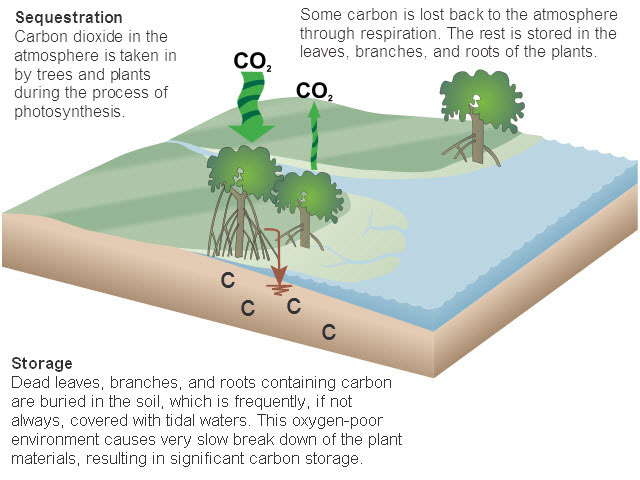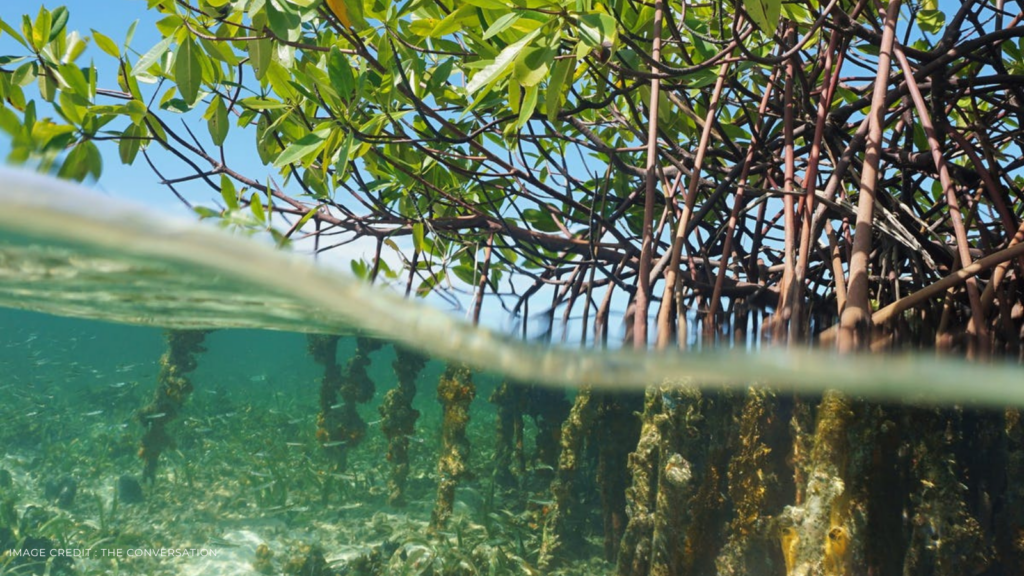Just like coral reefs, mangrove is extremely productive and unique ecosystem that provide critical services both to planet, animals and human beings. Here are 5 reasons why we need to restore protect them.
Mangroves are a group of trees and shrubs that live in the coastal intertidal zone. It is amongst the most productive marine ecosystems on Earth, providing a unique habitat opportunity for many species and key goods and services for human beings.
There are at least 80 different species of mangrove trees. All of the trees grow in areas with low-oxygen soil, where slow-moving waters allow fine sediments to accumulate. Mangrove forests only grow at tropical and subtropical latitudes near the equator because they cannot withstand freezing temperatures.
Around equator, mangrove forests can be recognised from their dense tangle of roots that make trees appear to be standing on stilts above the water. This tangle roots allow trees to handle the daily tides, both low and high. Most mangrove forests get flooded at least twice per day; slow the movement of tidal waters and cause sediments to settle out of the water and build up the muddy bottom. Because of this, mangroves are unique and important.
Why Mangrove is matter
Here are 5 critical reasons we should care about mangrove forests – and invest in restoring and protecting them:
(1). Carbon Storage to mitigate climate change
Mangrove forests store carbon at a rate two to four times greater than mature tropical forests and store three to five times more carbon per equivalent area than tropical forests, such as Amazon rainforest. This means that conserving and restoring mangroves is essential to mitigate climate change.

(2). Coastal defense
The natural coastal defences provided by mangroves reduce annual flooding significantly. Mangrove forests are the first line of defense for coastal communities. They stabilize shorelines by slowing erosion and provide natural barriers protecting coastal communities from increased storm surge, flooding, and hurricanes. mangrove forests are natural protection for communities vulnerable both to sea level rise and the more intense and frequent weather events caused by climate change.
(3). water quality
Mangrove forests are essential to maintaining water quality. With their dense network of roots and surrounding vegetation, they filter and trap sediments, heavy metals, and other pollutants. This ability to retain sediments flowing from upstream prevents contamination of downstream waterways and protects sensitive habitat like coral reefs and seagrass beds below.
(4). biodiversity
Home to an incredible array of species, mangroves are biodiversity hotspots. They provide nesting and breeding habitat for fish and shellfish, migratory birds, and sea turtles. The ecosystems are complex, which means they function best and are most resilient to the effects fo climate change, when all pieces of the ecosystem are in place – meaning the biodiversity is intact.
(5). Sustainable development
Intact and healthy mangrove forests have an untapped potential for sustainable revenue-generating initiatives including ecotourism, sport fishing, and other recreational activities. Locally-led community development can offer economic growth without compromising coastal ecosystems.
Mangrove forests are extremely unique and productive ecosystems, providing critical services that benefit all of us. join us in protecting and restoring mangrove forests around Asia !


